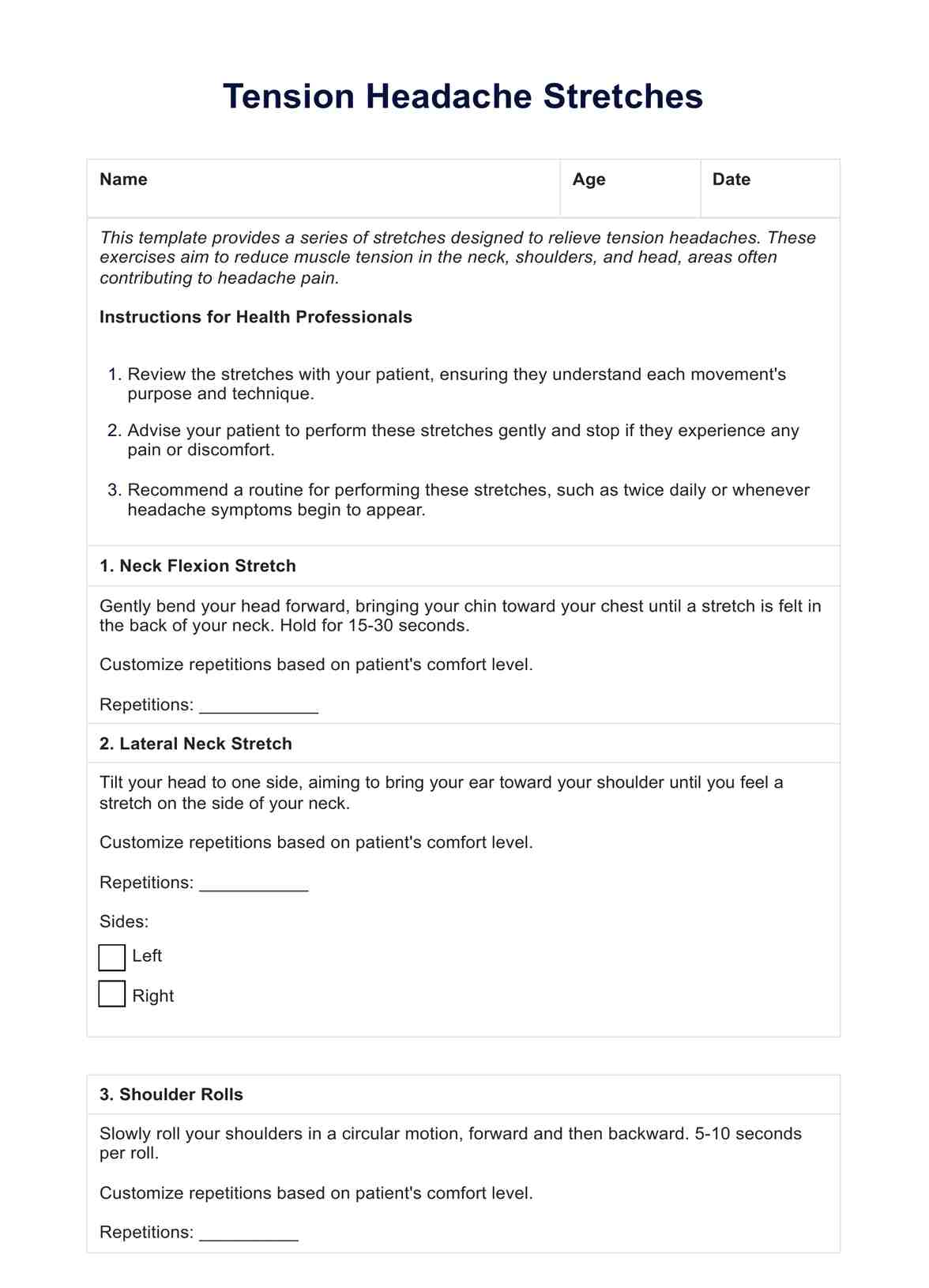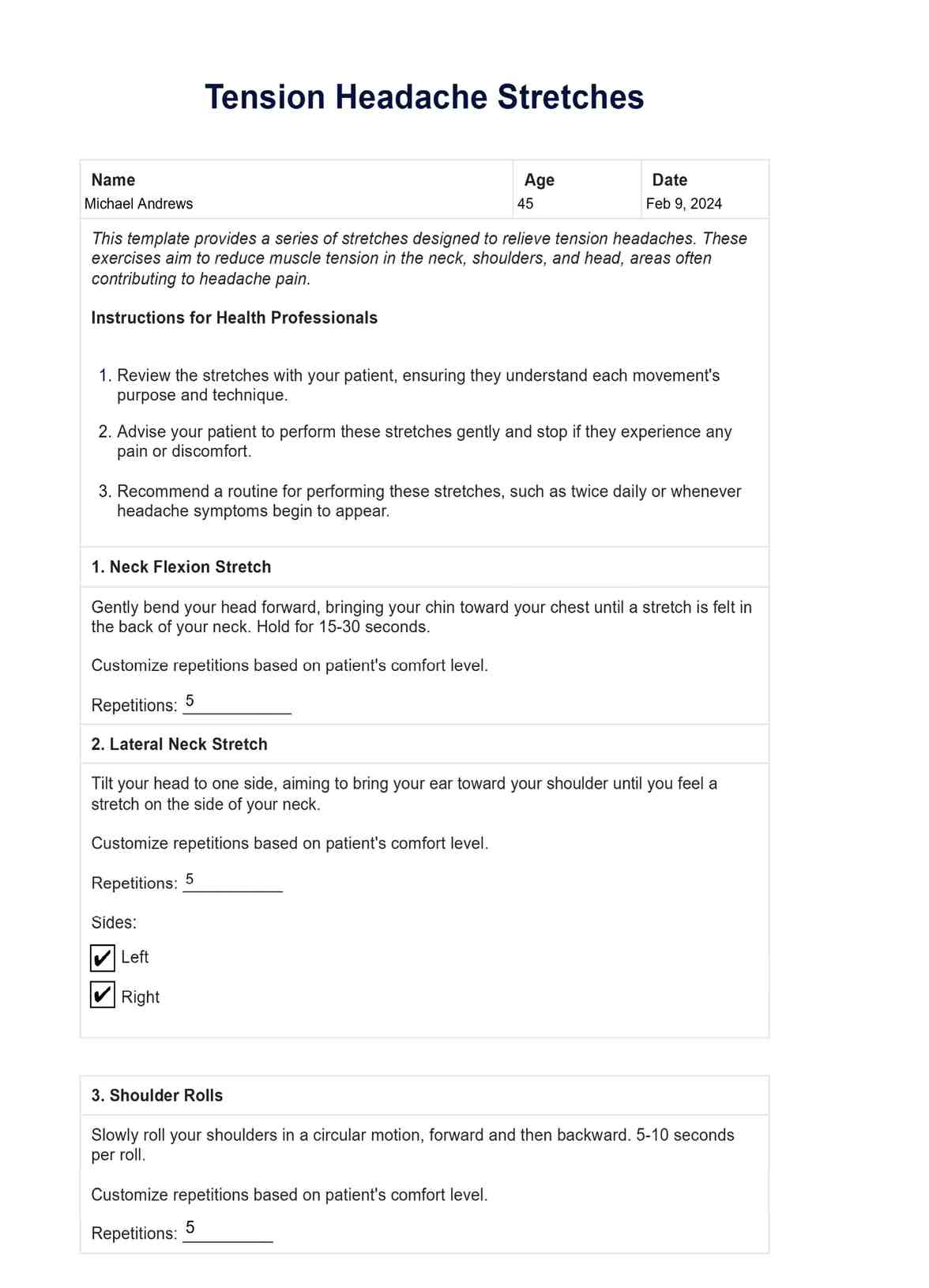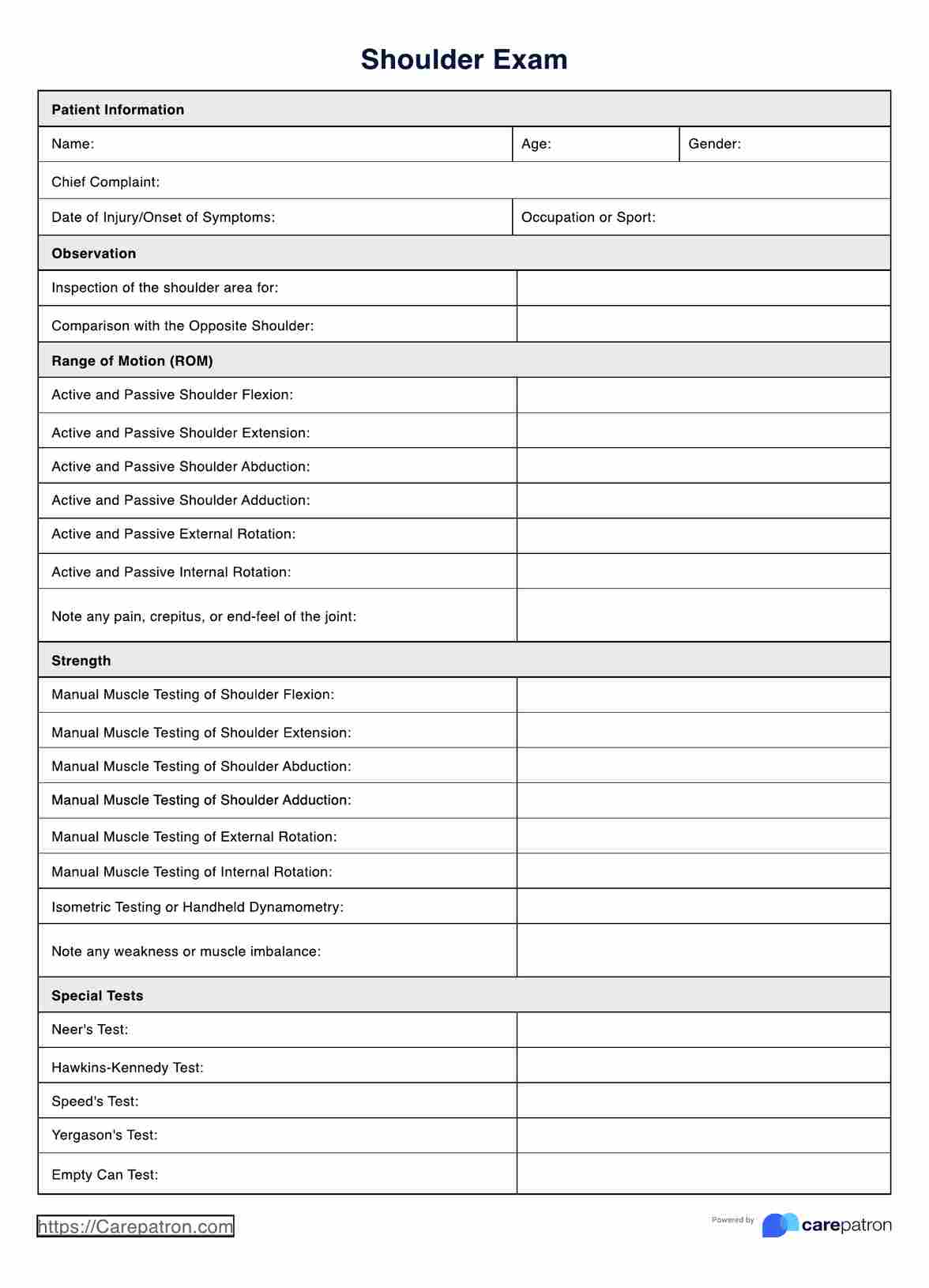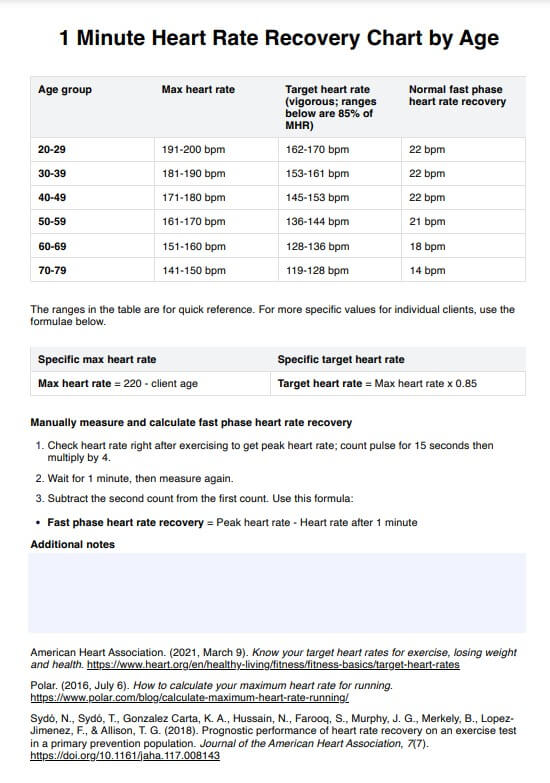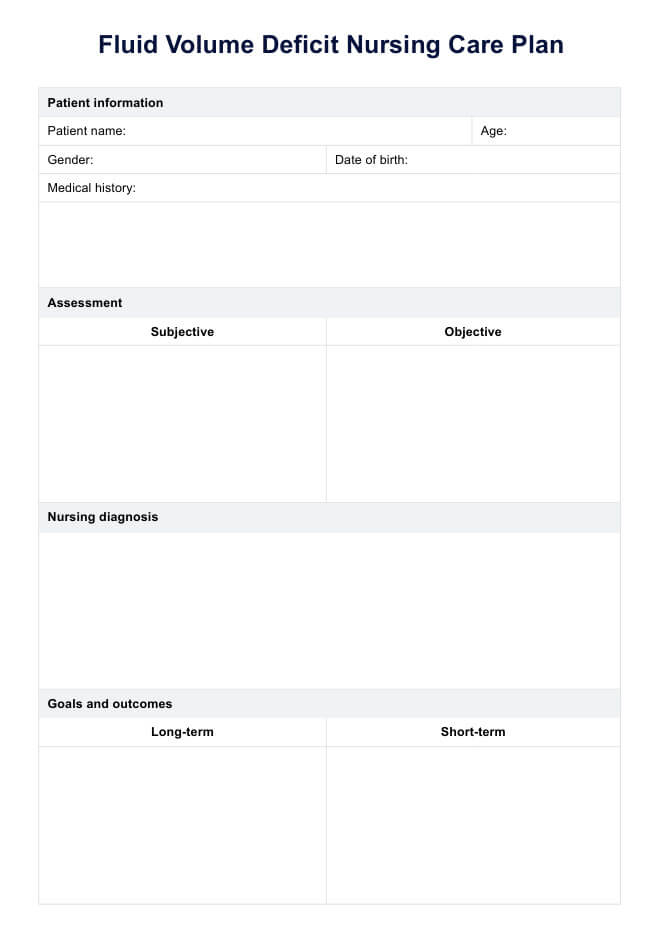Tension Headache Stretches
Discover effective Tension Headache Stretches for relief with our guide, designed for healthcare professionals to aid patients. Read now!


What are tension headaches?
Tension headaches, the most prevalent headache among adults and adolescents, manifest as a dull, aching head pain. They often create a sensation of tightness or pressure across the forehead or on the sides and back of the head, akin to a tight band being stretched around it. This discomfort is frequently accompanied by muscle tension, particularly in the scalp, neck, and shoulders, leading to tender or tight muscles. Unlike migraines, which are often accompanied by additional migraine symptoms like visual disturbances or nausea, tension headaches typically do not involve these other sensory disturbances.
The precise cause of tension headaches remains elusive, but they are widely attributed to muscle contractions in the head and neck regions. These contractions can be a reaction to various factors, including stress, depression, head injury, or anxiety, and result in the tight muscles associated with this headache type. In some individuals, tension headaches can become chronic, significantly impacting their daily lives. They can vary in frequency and intensity but are often linked to changes in stress levels or physical postures.
Gaining an understanding of tension headaches is essential for effective management and treatment. Recognizing the symptoms and potential triggers allows individuals to take proactive steps toward reducing their frequency and severity. For health professionals, offering comprehensive care to patients involves treating tension headaches and educating them about muscle tension's role in these headaches and strategies for prevention and relief, including physical therapy techniques and lifestyle adjustments.
Tension Headache Stretches Template
Tension Headache Stretches Example
Causes of tension headaches
Tension headaches arise from various factors contributing to muscle tension and stress in the body. Understanding these causes is crucial for healthcare professionals and patients to develop effective prevention and treatment strategies.
- Stress: One of the most common triggers for tension headaches is stress. Emotional and mental stress can lead to muscle tension, particularly in the neck, shoulders, and scalp, causing or exacerbating headache symptoms. Stress-related tension headaches often occur during or after periods of high stress and may be mitigated by stress management techniques.
- Poor posture: Poor posture, especially when sitting or standing for extended periods, can strain the neck and shoulders, leading to tight muscles and triggering tension headaches, sometimes causing pain in the left arm or left shoulder. Adjustments to workstation ergonomics and regular posture checks can help alleviate this strain.
- Eye strain: Prolonged periods of screen time without breaks can contribute to tension headaches, and in some cases, symptoms can extend to referred pain in the left arm due to muscle tension. Regular breaks using the 20-20-20 rule (every 20 minutes, look at something 20 feet away for 20 seconds) can help reduce eye strain and the risk of headaches.
- Dehydration: Dehydration can lead to tension headaches by causing the body to experience stress and muscle tightness. Maintaining adequate hydration throughout the day is a simple yet effective way to prevent dehydration-related tension headaches.
- Sleep disturbances: Research suggests insufficient or poor-quality sleep can significantly increase muscle tension and trigger headaches. Establishing a regular sleep schedule and creating a conducive sleep environment can improve sleep quality and reduce headache frequency.
- Caffeine and alcohol consumption: Excessive consumption of caffeine or alcohol can lead to dehydration and subsequent tension headaches. Moderating intake of these substances can help minimize their impact on headache occurrence.
By identifying and addressing these common causes, individuals can take proactive steps to prevent tension headaches or reduce their severity. Lifestyle adjustments and appropriate medical advice form the cornerstone of effective headache management.
How are tension headaches treated?
Treating tension headaches often involves a combination of lifestyle adjustments, physical therapies, and, in some cases, medication. Here are several effective strategies to manage and alleviate tension headaches.
Medication
Over-the-counter pain relievers such as ibuprofen, aspirin, or acetaminophen can be effective for immediate relief. However, it's essential to use these medications sparingly to avoid overuse headaches, a condition where frequent use of headache medications leads to chronic headaches.
Stress management techniques
Since stress is a primary trigger for tension headaches, employing stress management techniques can be highly beneficial. Practices such as mindfulness meditation, deep breathing exercises, yoga, and regular physical activity can reduce stress levels and decrease the frequency and severity of headaches.
Physical therapy
Physical therapy can address the muscular issues that contribute to tension headaches. A physical therapist may recommend exercises to strengthen the muscles around the neck and improve posture, reducing the likelihood of headaches caused by muscle tension and poor posture.
Massage therapy
Massage therapy can help relax tight neck, shoulders, and scalp muscles, relieving tension headaches. Regular massage sessions can also improve circulation and reduce stress, preventing headaches.
Acupuncture
Acupuncture, a traditional Chinese medicine technique involving the insertion of thin needles into specific points on the body, is effective in treating tension headaches. It may help by promoting relaxation and pain relief.
Stretching exercises
Incorporating specific stretches into your daily routine can alleviate muscle tension around the neck, shoulders, and head. Stretches that focus on these areas can prevent the onset of headaches or reduce their intensity when they occur. These help with neck pain as well.
By combining these treatment methods, individuals suffering from tension headaches can find relief and potentially reduce the frequency of their headaches. It's always recommended to consult with a healthcare professional before starting any new treatment regimen, especially if headaches are severe or persistent.
What are Tension Headache Stretches?
Tension headache stretches are exercises designed to relieve the muscle tension that often leads to headaches. These stretches primarily target the neck, shoulders, and upper back muscles, where tightness can significantly contribute to headache pain. By regularly performing these stretches, individuals can reduce muscle stiffness, improve flexibility, and decrease the frequency and severity of tension headaches.
Neck flexion stretch
This stretch aims to relieve tension in the back of the neck. Gently lower your chin to your chest, holding the position to feel a stretch in the back of your neck. This movement helps elongate the neck muscles that often tighten during stress or prolonged sitting.
Lateral neck stretch
To target the sides of your neck, gently tilt your head to one side, bringing your ear closer to your shoulder until a comfortable stretch is felt on the opposite side. This stretch addresses the lateral neck muscles, alleviating the strain contributing to tension headaches.
Shoulder rolls
Performing slow, deliberate shoulder rolls, both forward and backward, helps loosen the left shoulder, right shoulder, and upper back muscles. This simple exercise can significantly reduce the buildup of tension around the neck and shoulder area.
Neck extension stretch
Tilting your head back to look up at the ceiling stretches the front of your neck, counteracting the forward neck posture that often develops from long hours spent at a desk or computer.
Shoulder blade squeeze
Bringing your shoulder blades together as if trying to hold a pencil between them strengthens the muscles between the shoulder blades and opens up the chest. This exercise helps correct poor posture, a common cause of tension headaches.
Incorporating these stretches into your daily routine can offer a simple and effective way to manage tension headaches. They are designed to be easy to perform, requiring no special equipment, and can be done anywhere, making them an accessible solution for headache relief.
What are the benefits of Tension Headache Stretches?
Incorporating tension headache stretches into a daily routine brings multiple advantages, not just for immediate headache relief but for overall head and neck health. Here’s how they benefit users:
- Improved circulation: These stretches facilitate better blood flow to the head, neck, and shoulders, ensuring these areas receive sufficient oxygen and nutrients. Enhanced circulation can speed up the recovery of tight muscles, helping to relieve tension and reduce the frequency and intensity of tension headaches.
- Reduced muscle tension: Performing these stretches regularly assists in relaxing and lengthening the neck, shoulders, and scalp muscles. This reduction in muscle tension is crucial for providing headache relief, addressing one of the primary causes of tension headaches without medication.
- Increased flexibility: Tension headache stretches to increase muscle flexibility around the head and neck. Greater flexibility helps prevent the stiffness and discomfort that often lead to tension headaches, allowing for more comfortable and pain-free daily activities.
- Stress relief: Regularly stretching exercises can also significantly relieve pressure and stress, common triggers for tension headaches. This form of stress management can diminish the likelihood of headaches, offering an effective preventive strategy.
- Enhanced posture: These stretches directly target poor posture, significantly contributing to tension headaches. They encourage a posture that alleviates strain on the neck and shoulders, reducing the risk of tension headaches by relieving pressure in these areas.
- Preventing future headaches: By addressing muscle tension and poor posture, tension headache stretches offer immediate relief and serve as a preventive measure. Regular practice can decrease the overall occurrence of tension headaches, leading to enhanced well-being and headache relief.
Adopting tension headache stretches into wellness or therapeutic routines provides a comprehensive approach to managing tension headaches. It allows individuals to participate in their health care actively, offering a method to relieve tension and promote long-term health alongside traditional treatments.
Commonly asked questions
Yes, gentle stretching exercises targeting the neck, shoulders, and upper back can help relieve the muscle tension causing a headache.
Applying heat or cold to the neck and shoulders, performing tension-relieving stretches, and ensuring proper hydration can quickly relieve tension headaches.
Applying gentle pressure to the base of the skull, the bridge of the nose, or the temples can help relieve tension headaches.


